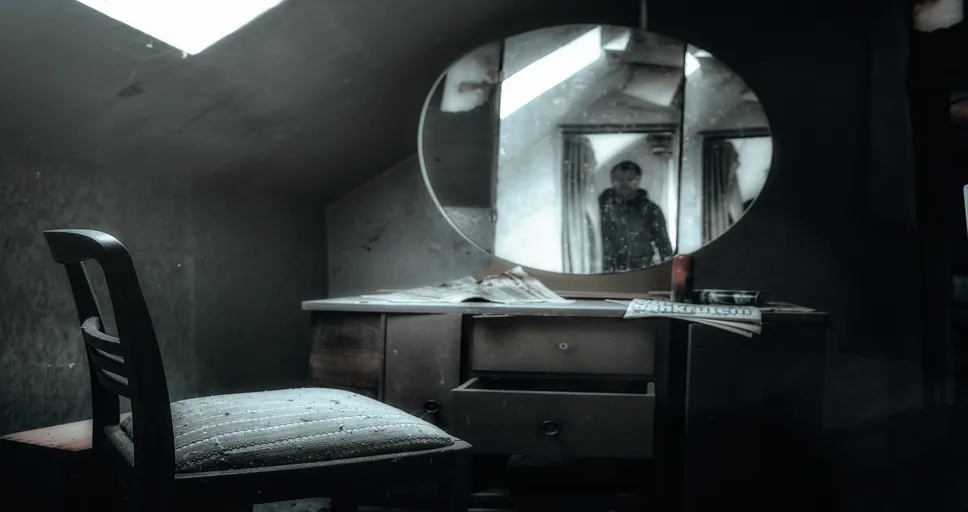Contents
- 1 Stages Of A Dying Marriage: 4 Early Warning Signs
- 2 4 Emotional Phases in a Struggling Marriage
- 3 4 Communication Breakdowns in a Failing Marriage
- 4 4 Final Stages Before the End of a Marriage
- 5 Frequently Asked Questions
- 5.1 What is considered a breakdown in marriage?
- 5.2 How do you know if your marriage has broken down?
- 5.3 What are the consequences of staying in an unhappy marriage?
- 5.4 What to do when your spouse is never happy?
- 5.5 How do you know a relationship is breaking down?
- 5.6 Can a loveless marriage survive?
- 5.7 What is the breakdown of the marriage?
- 5.8 What are the different types of marital breakdowns?
- 5.9 What are the stages of a marriage breakdown?
- 6 Navigating the Path Forward
- 7 Recommended Authors For Further Reading
Understanding the reasons behind the stages of a dying marriage can be both heart-wrenching and enlightening. This initial phase is characterized by subtle, often overlooked signs that the marital bond is weakening. It is crucial to recognize these early indicators to address underlying issues effectively.
- Diminishing Communication: Communication is the lifeline of any relationship. In the early stages of marital decline, conversations that once were deep and meaningful become superficial or nonexistent. This lack of communication is often the first red flag, indicating that both partners are gradually drifting apart.
- Decreased Emotional Intimacy: Emotional intimacy is about feeling close and connected. In a deteriorating marriage, this intimacy fades away. Couples might start to feel more like roommates than romantic partners, where emotional sharing and understanding become things of the past.
- Growing Indifference: Indifference often creeps in subtly. It’s a stage where partners no longer react with the same concern or interest to each other’s joys, challenges, or sorrows. This detachment can be more damaging than conflict, as it signifies a lack of investment in the relationship.
- Erosion of Trust: Trust is the foundation of any strong marriage. In the early stages of a marital decline, this trust begins to erode. It might start with small doubts or insecurities and can escalate to suspicions or a lack of faith in your partner’s commitment.
Recognizing these early signs provides an opportunity for intervention and possibly the reversal of the downward spiral of a marriage. By addressing these issues head-on, couples can work towards healing and strengthening their bond, potentially avoiding the later, more painful stages of a dying marriage.
- Diminishing Communication: Watch for conversations becoming superficial or non-existent, a sign of growing distance.
- Decreased Emotional Intimacy: Notice if you feel more like roommates than partners, indicating a loss of emotional closeness.
- Growing Indifference: Be aware of reduced interest in each other’s lives, signaling a lack of investment in the relationship.
- Erosion of Trust: Be alert to increasing doubts or insecurities, as trust is fundamental to a marriage.
- Frequent Criticism and Contempt: Recognize the shift from constructive criticism to harsh, demeaning comments.
- Defensiveness and Stonewalling: Note if conflicts lead to defensiveness and withdrawal, hindering communication.
- Loss of Intimacy and Connection: Be aware of reduced emotional and physical closeness, widening the emotional gap.
- Living Parallel Lives: Observe if shared activities and goals are replaced by individual pursuits, indicating a disconnect.
- Emotional Phases: Understand the progression from disillusionment to indifference, marking the emotional journey in a struggling marriage.
Stages Of A Dying Marriage: 4 Early Warning Signs
Recognizing the early warning signs in the stages of a dying marriage is crucial for taking timely steps to address the issues. Here are four key indicators that suggest a marriage may be in trouble:
- Frequent Criticism and Contempt: One of the earliest signs of a marriage in decline is the shift from constructive criticism to frequent, harsh criticisms. These are often signs of deeper resentment. When criticism becomes pervasive, it can lead to contempt, which is characterized by sarcasm, cynicism, name-calling, and mockery. This contempt can be particularly corrosive to a relationship, stripping away the respect and affection that once formed the foundation of the marriage.
- Defensiveness and Stonewalling: As conflicts become more regular, defensiveness tends to set in. Instead of listening and addressing concerns, one or both partners may consistently defend their actions and refuse to acknowledge their part in the marriage’s difficulties. This defensiveness can escalate to stonewalling, where one partner completely withdraws from interactions, refusing to engage or communicate, effectively putting up a wall between themselves and their spouse. This breakdown in communication is a significant red flag in the progression of a dying marriage.
- Loss of Intimacy and Connection: A notable decline in both emotional and physical intimacy is a telling sign. Couples may find they no longer share their thoughts and feelings with each other. They may also experience a reduction or complete cessation of physical closeness, including sexual activity. This loss of intimacy and connection can create a chasm between partners, making it difficult to maintain a sense of closeness and understanding in the relationship.
- Living Parallel Lives: When couples start living more like roommates than partners, it’s a significant indicator that the marriage is in trouble. This involves pursuing separate lives, where shared activities, interests, and goals are replaced by individual pursuits. Communication about daily life becomes minimal, and the sense of being a team or a united front fades away. This growing apart can be one of the more subtle but telling stages of a dying marriage, signaling a lack of mutual investment in the relationship’s future.
Understanding these early warning signs is essential for couples. Recognizing them can be the first step towards addressing underlying issues and seeking help. Whether it’s through communication, counseling, or other means of support, acknowledging and tackling these problems early can be crucial in preventing the further decline of the marriage. Remember, the earlier these signs are noticed and addressed, the better the chances are for the marriage to recover and thrive.
4 Emotional Phases in a Struggling Marriage
A marriage doesn’t deteriorate overnight; it progresses through various emotional phases. Recognizing these stages in a dying marriage can provide insight into the emotional journey both partners experience. Here are the four emotional phases typically observed in a struggling marriage:
- Disillusionment and Disappointment: The initial phase often starts with disillusionment. The early stages of a relationship, filled with excitement and idealization, give way to a more realistic view, which can be jarring. Disappointment creeps in when the relationship does not meet the expectations set during the earlier, more romantic phase. This stage is marked by feelings of dissatisfaction and a sense of loss, as the dream of a perfect partnership starts to crumble.
- Resentment Building: As the disillusionment deepens, it often transforms into resentment. This phase is characterized by a buildup of unaddressed grievances and hurt feelings. Small annoyances can escalate into significant sources of resentment. This emotional state can lead to more frequent conflicts and a feeling of being stuck in a cycle of negativity. During this stage, partners may start to feel that their spouse is no longer the person they fell in love with.
- Emotional Withdrawal and Detachment: As the stages of a dying marriage progress, one or both partners may begin to emotionally withdraw. This detachment is a self-protective measure to guard against further hurt. Communication diminishes, and emotional intimacy fades. In this phase, couples might start living more like roommates than spouses, with minimal interaction beyond the necessities. The gap in the emotional connection becomes increasingly difficult to bridge.
- Indifference and Acceptance of the End: The final emotional phase is often marked by indifference. The intense emotions of earlier stages give way to a resigned acceptance. At this point, partners may no longer feel anger or sadness; instead, they might feel nothing at all towards each other. This stage is often the most telling sign that the marriage is nearing its end. It indicates a complete loss of hope for the relationship’s revival and readiness to move on.
Understanding these emotional phases can be crucial for couples who are trying to navigate the troubled waters of their relationship. Recognizing where they are in these stages of a dying marriage can provide valuable insights into their emotional states and the health of their relationship. It can also guide them in seeking appropriate help, whether it’s through counseling, communication efforts, or other forms of support, to either salvage the marriage or move forward with the least emotional damage.
4 Communication Breakdowns in a Failing Marriage

Effective communication is the cornerstone of any healthy marriage, and its breakdown is often a pivotal part of the stages of a dying marriage. Here are four common communication breakdowns that can signify a marriage is failing:
- The Escalation of Conflict: In troubled marriages, conflicts tend to escalate quickly and become more intense. Instead of resolving disagreements constructively, couples might find themselves stuck in a pattern of arguing over the same issues repeatedly. These arguments can become more heated and less productive, leading to a cycle of anger and frustration. This escalation often indicates a lack of effective communication skills and an inability to manage and resolve conflicts healthily.
- Avoidance of Difficult Conversations: Another sign of communication breakdown is the avoidance of necessary but challenging conversations. In a failing marriage, partners may start to shy away from discussing important topics to avoid conflict. This avoidance can create a significant communication gap, leaving crucial issues unresolved and allowing resentment to build. Over time, this can lead to a sense of disconnection and misunderstanding between partners.
- Passive-Aggressive Communication: Passive-aggressive behavior is a common indicator of communication issues in a deteriorating marriage. This indirect form of expressing negative feelings involves subtle jabs, sarcastic remarks, or backhanded compliments. It’s a way of communicating discontent without openly addressing the issue. This type of communication can be damaging because it creates confusion and mistrust, preventing honest and direct dialogue.
- Lack of Emotional Sharing and Empathy: In the advanced stages of a dying marriage, there’s often a significant decline in emotional sharing and empathy. Couples stop sharing their feelings, hopes, and concerns with each other. They also may struggle to show empathy towards their partner’s experiences. This lack of emotional exchange can lead to a feeling of loneliness and isolation within the marriage, as if living with a stranger. When partners no longer connect emotionally, it becomes challenging to maintain a sense of intimacy and understanding.
Addressing these communication breakdowns is essential in trying to salvage a failing marriage. Acknowledging and working on these issues, either independently or with the help of a counselor, can sometimes help to reverse the course of a deteriorating relationship. However, if these communication problems persist without resolution, they can lead to the finalization of the stages of a dying marriage, often culminating in separation or divorce. Recognizing these signs early and taking proactive steps can be crucial in either mending the relationship or parting ways with minimal emotional turmoil.
4 Final Stages Before the End of a Marriage
The concluding phases in the stages of a dying marriage are often the most challenging and heart-wrenching. These stages represent the final steps before a marriage reaches its end. Understanding these stages can provide clarity and perhaps even a path to healing, whether that means reconciliation or moving on.
- Profound Disconnection: In this stage, the emotional, physical, and intellectual connection that once held the marriage together has significantly eroded. Partners may feel completely disconnected from each other’s lives. They live as individuals under the same roof, with minimal interaction and no shared interests or goals. The sense of partnership that defines a marriage is no longer present, leaving a void filled with loneliness and isolation.
- Solidification of Resentment and Blame: As the marriage continues to deteriorate, resentment that has built up over time becomes more entrenched. Blame becomes a central theme, with each partner attributing the failure of the marriage to the other. This blame game creates a hostile and bitter environment, making reconciliation increasingly difficult. The focus shifts from resolving issues to justifying their own feelings and actions.
- Acceptance of the Inevitability of Separation: One of the final stages in a dying marriage is when one or both partners come to terms with the fact that the marriage is beyond saving. This acceptance is often accompanied by a sense of relief or resignation. The energy and effort once put into saving the marriage are now directed towards planning for life post-separation. This stage involves practical considerations like living arrangements, finances, and if applicable, co-parenting strategies.
- Legal Dissolution and Emotional Closure: The final stage is the formal end of the marriage – the legal dissolution. This involves the practical aspects of divorce, such as the division of assets, custody arrangements, and legal proceedings. Beyond the legalities, this stage also signifies emotional closure. It’s a time when individuals begin to emotionally disentangle themselves from their partner and the marriage, allowing them to start processing the loss and moving forward with their lives.
Navigating these final stages of a dying marriage can be complex and emotionally taxing. It’s important for individuals going through this process to seek support, whether from friends, family, therapists, or support groups. Understanding and accepting these stages can also aid in a smoother transition into post-marriage life. While the end of a marriage is undoubtedly painful, it can also be a time of personal growth and the beginning of a new chapter.
- Early Signs of Marital Decline: Lack of communication, decreased emotional intimacy, growing indifference, and erosion of trust.
- Warning Signs of Trouble: Frequent criticism and contempt, defensiveness and stonewalling, loss of intimacy and connection, living parallel lives.
- Emotional Phases: Disillusionment and disappointment, resentment building, emotional withdrawal and detachment, indifference and acceptance of the end.
- Importance of Intervention: Recognizing these signs and stages is crucial for timely intervention to heal and strengthen the marital bond.
Frequently Asked Questions

What is considered a breakdown in marriage?
A breakdown in marriage is typically characterized by persistent conflict, lack of communication, emotional detachment, and the absence of mutual support and understanding.
How do you know if your marriage has broken down?
You can recognize a broken-down marriage by ongoing unhappiness, constant arguments, emotional distance, lack of intimacy, and an inability to resolve conflicts.
What are the consequences of staying in an unhappy marriage?
Staying in an unhappy marriage can lead to chronic stress, emotional distress, diminished self-esteem, and can negatively impact mental and physical health.
What to do when your spouse is never happy?
When dealing with an perpetually unhappy spouse, it’s important to communicate openly, seek to understand their perspective, and consider professional counseling or therapy.
How do you know a relationship is breaking down?
A relationship is likely breaking down when there is frequent conflict, lack of trust, diminished communication, emotional or physical detachment, and a failure to resolve disagreements.
Can a loveless marriage survive?
A loveless marriage can survive, often through commitment to mutual responsibilities or for children, but it may lack emotional fulfillment and deep connection.
What is the breakdown of the marriage?
The breakdown of a marriage refers to the deterioration of the relationship, marked by emotional disconnection, lack of mutual support, persistent conflict, and breakdown in communication.
What are the different types of marital breakdowns?
Different types of marital breakdowns include emotional estrangement, communication breakdown, infidelity, financial disputes, and incompatibility.
What are the stages of a marriage breakdown?
The stages of a marriage breakdown often include disillusionment, conflict escalation, emotional detachment, loss of trust and respect, and eventually, separation or divorce.
After journeying through the stages of a dying marriage, navigating the path forward is a critical phase that involves healing, self-discovery, and potentially rebuilding the relationship or moving on. Whether a couple decides to salvage their marriage or part ways, understanding how to proceed is vital for the emotional well-being of both partners.
- Seeking Professional Help: Regardless of the decision to stay together or separate, seeking professional help can be invaluable. Couples counseling can provide a safe space to explore the reasons behind the failing marriage and offer tools for either reconciliation or amicable separation. Individual therapy can also be beneficial, helping each partner understand their emotions and navigate their way through this challenging time.
- Open Communication and Honesty: If there is a mutual desire to salvage the marriage, open communication and honesty are essential. This involves having difficult conversations about the issues that led to the marriage’s decline. It’s important to address problems openly, listen to each other’s perspectives, and express emotions in a constructive manner. Re-establishing trust and understanding is a gradual process that requires patience and commitment from both partners.
- Setting Boundaries and Expectations: In both scenarios of reconciliation or separation, setting clear boundaries and expectations is crucial. This includes agreeing on communication levels, co-parenting arrangements if children are involved, and respect for each other’s decisions and feelings. Clear boundaries can prevent misunderstandings and further emotional hurt.
- Self-Care and Personal Growth: It’s important for individuals to focus on self-care and personal growth. This can involve engaging in activities that bring joy, reconnecting with oneself, and investing time in hobbies or interests that may have been neglected. Personal growth also includes learning from the experiences within the marriage, which can lead to improved self-awareness and better relationships in the future.
- Building a Support System: Having a strong support system is vital during this time. This includes friends, family, support groups, or communities that can offer emotional support, practical advice, and a sense of belonging. Sharing experiences with others who have gone through similar situations can be particularly comforting and helpful.
- Planning for the Future: Finally, planning for the future is an important step, whether that involves rebuilding the marriage or starting a new life independently. This includes setting goals, both personal and professional, and envisioning a future where happiness and fulfillment are possible. It’s a time for both partners to reflect on what they want from life and how they plan to achieve it.
Navigating the path forward after experiencing the stages of a dying marriage can be a time of significant personal transformation. Whether the outcome is a renewed commitment to the marriage or a respectful separation, the journey involves healing, understanding, and growth. It’s a process that unfolds differently for everyone, but with the right approach and support, it can lead to a more fulfilling and contented life.
Recommended Authors For Further Reading

- John Gottman – Gottman is a renowned psychological researcher who has extensively studied divorce prediction and marital stability, providing valuable insights into the dynamics of a marriage, including its deterioration.
- Esther Perel – Perel is a psychotherapist known for her work on human relationships, particularly focusing on aspects like erotic intelligence and the intricacies of maintaining a healthy marriage.
- Gary Chapman – Chapman is best known for his book “The 5 Love Languages,” which offers deep insights into how love is expressed and received in relationships, shedding light on potential issues in a failing marriage.
- Sue Johnson – As a leading innovator in the field of couple therapy, Johnson’s work focuses on attachment theory and its application in helping couples rebuild emotional bonds.
- Harville Hendrix – Hendrix, a clinical pastoral counselor, is well-regarded for his work on intimate relationships and personal growth, especially his theory on how childhood experiences impact adult relationships.


